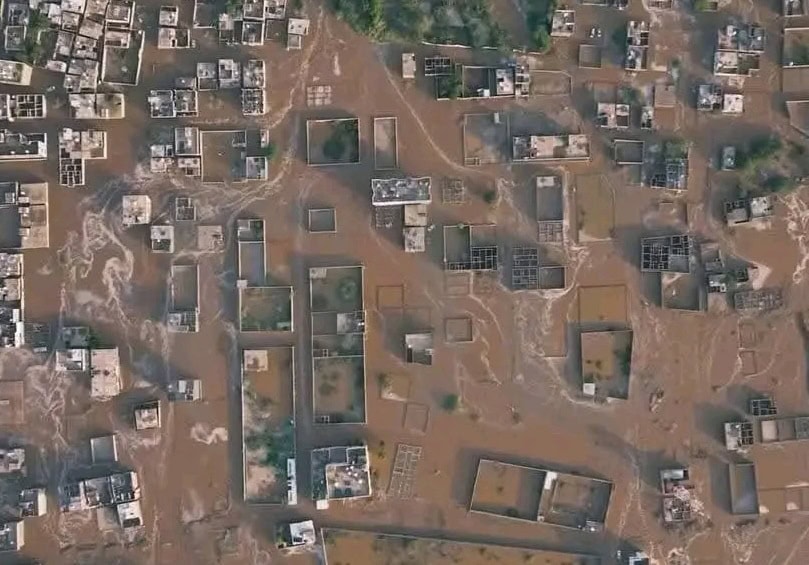
An aerial photo shows the streets of the Al-Haswa area in the Al-Buraiqah district of Aden flooded with water, August 23, 2025 (Photo: AIC)
28-08-2025 at 9 PM Aden Time
|
|
Aden (South24 Center)
South Yemen governorates are witnessing a humanitarian disaster following incessant heavy rains and flash floods that have killed many people and submerged entire neighborhoods, prompting urgent appeals for aid from international organizations that have warned of worsening conditions in Yemen amid a fragile humanitarian situation and a severe economic crisis.
Read more at: Flash Floods Leave Dozens Dead in South Yemen
According to data from Civil Defense, the Interior Ministry, and local reports, the floods have left at least 18 people dead — including women and children — so far, and injured four others. Flooding incidents and casualties were reported across multiple governorates, including Aden, Lahj, Hadramout, and Shabwa.
In Aden, hundreds of homes have been submerged in Al-Buraiqah district, which Governor Ahmed Lamlas has declared as a “disaster area”. The local authority has appealed to the government and aid agencies to intervene quickly to salvage the submerged neighborhoods and provide water pumps and urgent assistance.
District director Salah Al-Shoubaji said in an official appeal that “only three pumps have reached the area, which are not enough to remove the water”, stressing that neighborhoods such as Al-Haswa, Al-Shaab, the Old Market, and Al-Buraiqah remain submerged and require urgent action, alongside health measures to prevent disease outbreaks.
In Lahj governorate, flood waters from Wadi Al-Husseini flowed toward the outskirts of Aden, cutting off villages and causing extensive damage to farmland.
The local response included rescue operations for dozens of stranded families and government decisions to halt construction in flood channels and launch a project to secure the Wadi Al-Kabeer in Aden. Authorities in Wadi Hadramout also pledged compensation to affected families. Schools in Aden have been opened up to shelter displaced people, and food and basic aid been distributed.
Internationally, the UN Office for the Coordination of Humanitarian Affairs (OCHA) said the rains and flooding have affected tens of thousands of Yemenis since April, leaving more than 100 dead or injured. It noted that its partner organisations are working to scale up assistance, including emergency aid packages, shelter, food, and hygiene supplies.
The International Rescue Committee (IRC) said that more than 100,000 people were affected due to the floods, including thousands of displaced families who lost their homes. It warned of heightened risks of disease and food insecurity in Abyan, Lahj, Aden, and Taiz.
The International Organization for Migration (IOM) reported that more than 46,000 people were impacted in 73 displacement sites. It said floods had swept away homes and property, led to the collapse of sanitation systems, and contaminated water sources, raising the risk of cholera and other waterborne diseases. The organization said it has distributed cash assistance and emergency supplies, including water tanks and hygiene kits, but warned that funding gaps threaten to halt aid.
Yemen’s Geological Survey Authority has warned that new flood waves are likely to hit Wadi Tuban in Lahj and extend to Aden, urging residents to exercise caution and stay away from waterways.
Meanwhile, the Southern Transitional Council’s Social Affairs Authority renewed its appeal to local and international organizations to provide assistance, saying the floods had “paralyzed life and inflicted widespread suffering”.
The disaster comes as South Yemen faces one of the world’s most complex humanitarian and economic crises, amid ongoing conflict and the absence of effective infrastructure. The recent floods have highlighted the weak emergency planning and the lack of drainage networks, spurring calls for a long-term strategy to strengthen the local communities’ resilience against climate impacts and natural disasters.